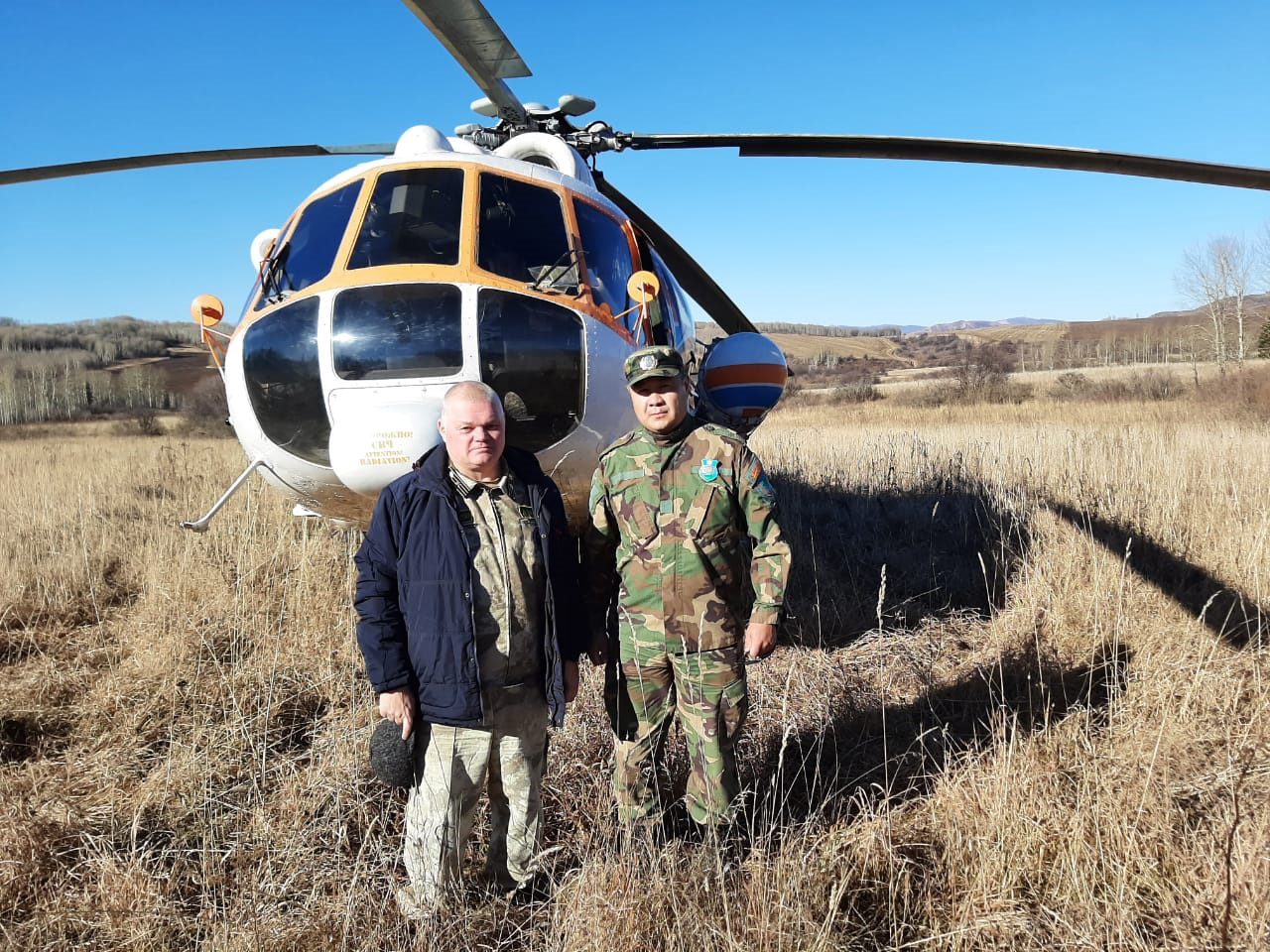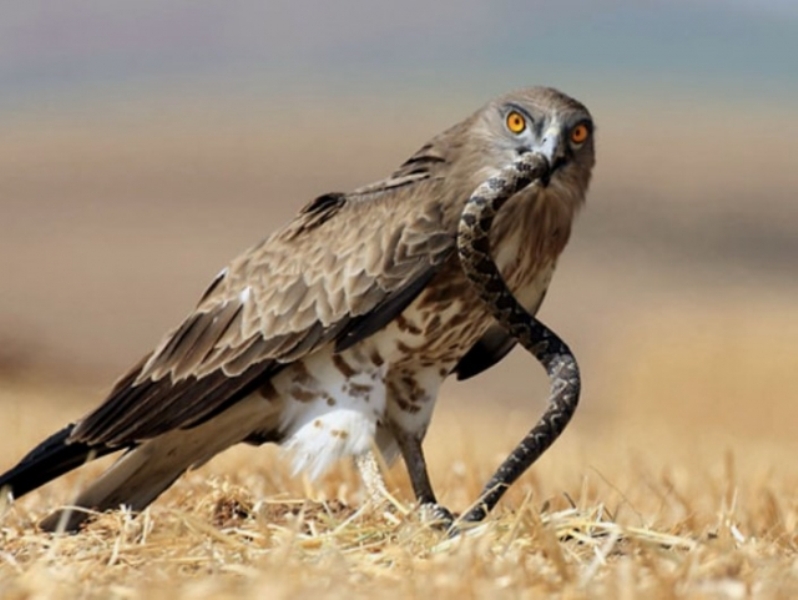 Serpent venom
Serpent venom
The Short-toed Eagle breeds in semi-deserts, mountain steppes, forest-steppes, coniferous-deciduous forests and southern taiga, mainly in the European part of Russia and in Kazakhstan. In the steppes of the Ciscaucasia and the Volga region, it is absent for nesting, thereby forming a wide gap in the range between the mountain forests of the Caucasus in the south and Dono-Archedinsky
sands and ravine forests of the Volga Upland in the north. In Siberia, it is distributed extremely unevenly, only in the forest-steppe zone to the east to the Ob basin. East of Altai, only rare sightings of birds are known, and nesting has not been established. In Kazakhstan, it breeds throughout the south and southeast, both on the plains and in the mountains, in the Aral-Caspian region, Mugodzhary, uplands of the Sarysu basin, Central and Eastern Kazakhstan and the Kokchetav Upland, in the Dzungarian Alatau, along the southern periphery of Altai and in the Kalbinsk highlands. The number in Russia is 0.6–1.2 thousand breeding pairs, in Kazakhstan - 3–5 thousand breeding pairs.
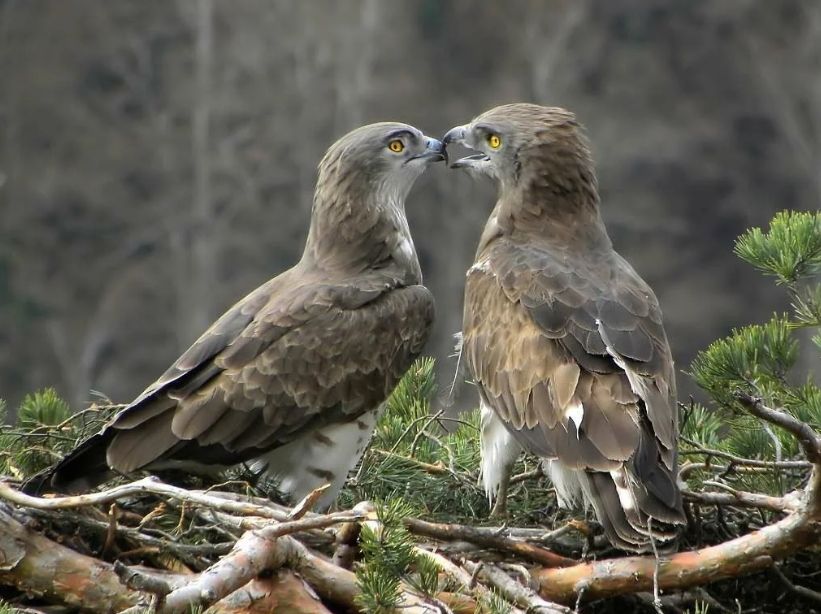 Appearance
Appearance
A large bird of prey with a relatively large head. The top is dark, grayish-brown, the bottom is almost white with a black pattern (in different birds the pattern is of different intensity, up to light gray, hardly noticeable from afar), the throat and goiter of some birds are dark. The ends of the flight feathers are gray or black. On the long tail 3-4, usually 3, indistinct dark stripes
(the strip along the edge of the tail is brighter and more pronounced). The eyes are yellow and large. The paws are bluish-gray, the tarsus is naked, covered on all sides with small rectangular shields. Males and females are the same size and coloration. Weight - 1.2-2.3 kg, body length - 62-72 cm, wing length - 50.5-60.5 cm, wingspan - 170-185 cm.
 Behavior and nutrition
Behavior and nutrition
Migratory view. The first migrants are observed from the end of March, appearing at nesting sites in April (in the north - at the end of April). Autumn migration is observed in September-early October. They live in open areas, combined with forest tracts, or in forests with open swamps and glades. The main habitat requirements are a high number of snakes and low human attendance. They arrive after the snow has melted, usually in pairs, from year to year they adhere to one territory. The nests are relatively small, about the size of a buzzard's nest, and fragile, as a rule, they are well hidden in the crowns of trees. Rarely nest on rocks. Nesting material - branches, lining - green twigs, grass, scraps of snake skins.
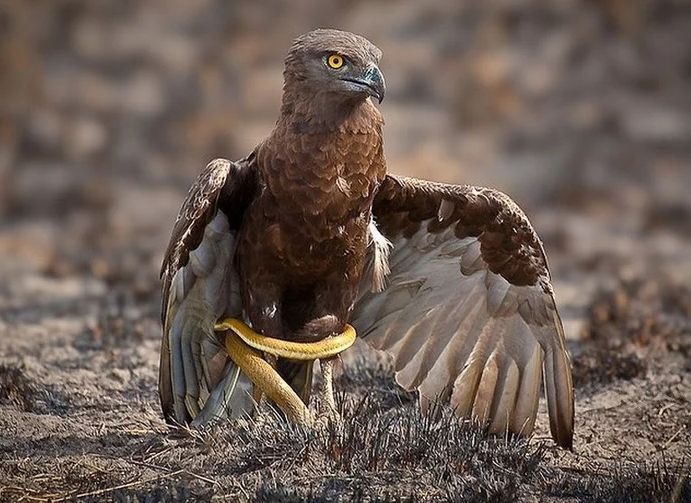 There is only one white egg in the clutch, with a slight greenish tinge, 62–85 x 50–65 mm in size. The female incubates, the male feeds her and occasionally replaces her on the nest. Incubation - 46-48 days. The incubating female actively molts. They are very careful at the nest, seeing a person from afar, they silently fly away and do not show up for a long time. Both the first and second down outfit are white. A chick, even grown up, when a person examines the nest, hides and does not try to defend itself, sits in the nest for 70–75 days.
There is only one white egg in the clutch, with a slight greenish tinge, 62–85 x 50–65 mm in size. The female incubates, the male feeds her and occasionally replaces her on the nest. Incubation - 46-48 days. The incubating female actively molts. They are very careful at the nest, seeing a person from afar, they silently fly away and do not show up for a long time. Both the first and second down outfit are white. A chick, even grown up, when a person examines the nest, hides and does not try to defend itself, sits in the nest for 70–75 days.
They feed mainly on snakes, incl. and poisonous, looking out for them in open places from a height of soaring flight. Seeing a snake, they dive steeply, grab its head with their paw to avoid bites. The caught and killed snake is swallowed whole, without tearing. They carry it to the nest in the beak or in the paws, or half-swallowed (hanging from the beak). Lizards, small rodents, chicks, and frogs are caught as replacement food.
The main reasons for the great rarity of short-toed eagles are the low number of snakes and low fecundity, combined with the great caution of birds. They need all kinds of protection. The species is listed in the Red Books of Russia, Kazakhstan and Belarus.
 Enemies
Enemies
Natural limiting factors are the lack of nesting and hunting biotopes, limited food supplies. The steady decline in snake numbers is most responsible for the decline in the short-toed eagle populations in many parts of its range. Since he avoids continuous forests, the reduction in the areas of cutting areas, the overgrowth of extensive clearings with shrubs, and the drainage of open swamps significantly reduce the success of his hunting and, accordingly, reproduction. After frosty winters (for example, in the 1960s), the number of snakes dropped sharply, followed by the short-toed eagle. Dangerous for the species is the massive uncontrolled catch of snakes for commercial purposes (obtaining poison, export). The snake-eater is very cautious and therefore intolerant of even moderate disturbance during nesting time. Recently, the threat of illegal removal of clutches and chicks of the short-toed eagle by poachers has been increasing.
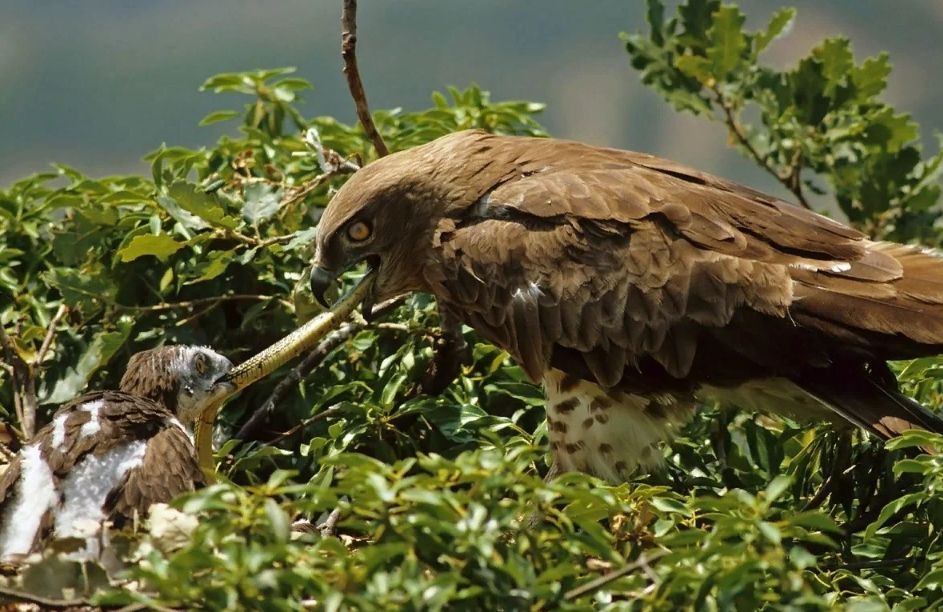
 On November 4, 2022, the Ministry of Ecology, Geology and Natural Resources of the Republic of Kazakhstan held a meeting on combating corruption in the system of the Committee for Forestry and Wildlife.
On November 4, 2022, the Ministry of Ecology, Geology and Natural Resources of the Republic of Kazakhstan held a meeting on combating corruption in the system of the Committee for Forestry and Wildlife.







